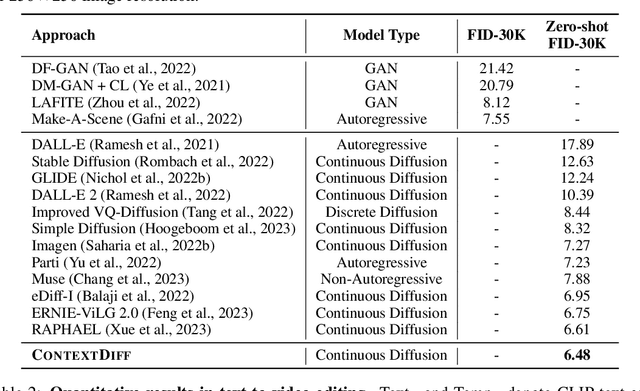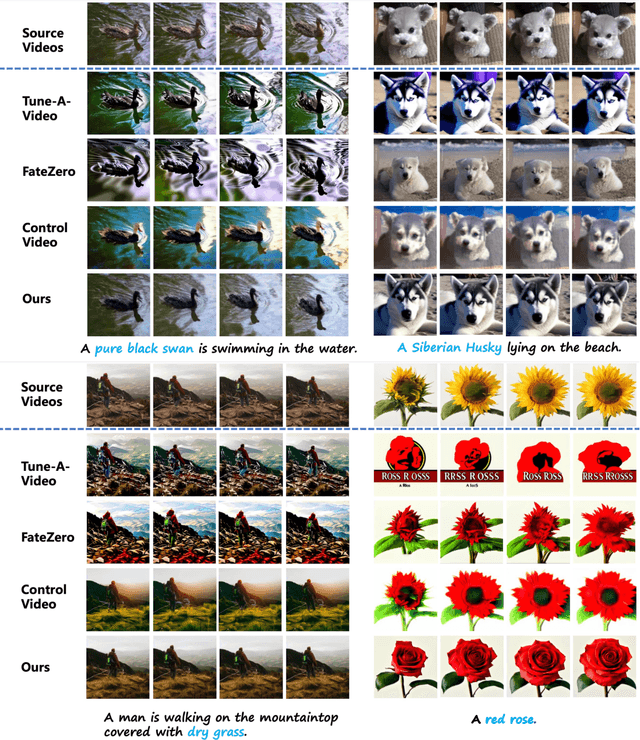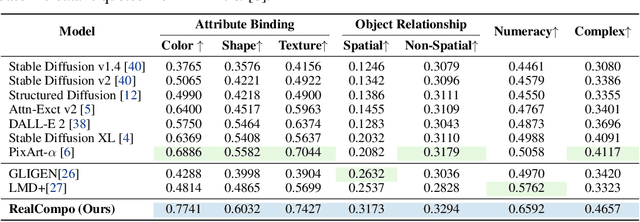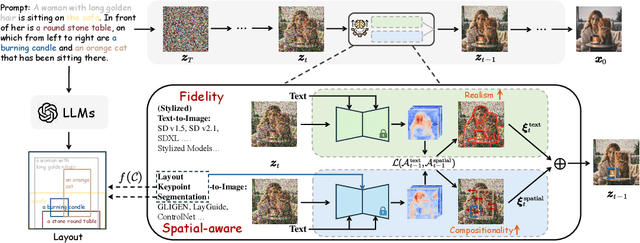Zhaochen Yu
ReasonFlux: Hierarchical LLM Reasoning via Scaling Thought Templates
Feb 10, 2025Abstract:We present that hierarchical LLM reasoning via scaling thought templates can effectively optimize the reasoning search space and outperform the mathematical reasoning capabilities of powerful LLMs like OpenAI o1-preview and DeepSeek V3. We train our ReasonFlux-32B model with only 8 GPUs and introduces three innovations: (i) a structured and generic thought template library, containing around 500 high-level thought templates capable of generalizing to similar or relevant reasoning problems; (ii) performing hierarchical reinforcement learning on a sequence of thought templates instead of long CoTs, optimizing a base LLM to plan out an optimal template trajectory for gradually handling complex problems; (iii) a brand new inference scaling system that enables hierarchical LLM reasoning by adaptively scaling thought templates at inference time. With a template trajectory containing sequential thought templates, our ReasonFlux-32B significantly advances math reasoning capabilities to state-of-the-art levels. Notably, on the MATH benchmark, it achieves an accuracy of 91.2% and surpasses o1-preview by 6.7%. On the USA Math Olympiad (AIME) benchmark, ReasonFlux-32B solves an average of 56.7% of problems, surpassing o1-preview and DeepSeek-V3 by 27% and 45%, respectively. Code: https://github.com/Gen-Verse/ReasonFlux
SuperCorrect: Supervising and Correcting Language Models with Error-Driven Insights
Oct 11, 2024



Abstract:Large language models (LLMs) like GPT-4, PaLM, and LLaMA have shown significant improvements in various reasoning tasks. However, smaller models such as Llama-3-8B and DeepSeekMath-Base still struggle with complex mathematical reasoning because they fail to effectively identify and correct reasoning errors. Recent reflection-based methods aim to address these issues by enabling self-reflection and self-correction, but they still face challenges in independently detecting errors in their reasoning steps. To overcome these limitations, we propose SuperCorrect, a novel two-stage framework that uses a large teacher model to supervise and correct both the reasoning and reflection processes of a smaller student model. In the first stage, we extract hierarchical high-level and detailed thought templates from the teacher model to guide the student model in eliciting more fine-grained reasoning thoughts. In the second stage, we introduce cross-model collaborative direct preference optimization (DPO) to enhance the self-correction abilities of the student model by following the teacher's correction traces during training. This cross-model DPO approach teaches the student model to effectively locate and resolve erroneous thoughts with error-driven insights from the teacher model, breaking the bottleneck of its thoughts and acquiring new skills and knowledge to tackle challenging problems. Extensive experiments consistently demonstrate our superiority over previous methods. Notably, our SuperCorrect-7B model significantly surpasses powerful DeepSeekMath-7B by 7.8%/5.3% and Qwen2.5-Math-7B by 15.1%/6.3% on MATH/GSM8K benchmarks, achieving new SOTA performance among all 7B models. Code: https://github.com/YangLing0818/SuperCorrect-llm
VideoTetris: Towards Compositional Text-to-Video Generation
Jun 06, 2024Abstract:Diffusion models have demonstrated great success in text-to-video (T2V) generation. However, existing methods may face challenges when handling complex (long) video generation scenarios that involve multiple objects or dynamic changes in object numbers. To address these limitations, we propose VideoTetris, a novel framework that enables compositional T2V generation. Specifically, we propose spatio-temporal compositional diffusion to precisely follow complex textual semantics by manipulating and composing the attention maps of denoising networks spatially and temporally. Moreover, we propose an enhanced video data preprocessing to enhance the training data regarding motion dynamics and prompt understanding, equipped with a new reference frame attention mechanism to improve the consistency of auto-regressive video generation. Extensive experiments demonstrate that our VideoTetris achieves impressive qualitative and quantitative results in compositional T2V generation. Code is available at: https://github.com/YangLing0818/VideoTetris
Buffer of Thoughts: Thought-Augmented Reasoning with Large Language Models
Jun 06, 2024Abstract:We introduce Buffer of Thoughts (BoT), a novel and versatile thought-augmented reasoning approach for enhancing accuracy, efficiency and robustness of large language models (LLMs). Specifically, we propose meta-buffer to store a series of informative high-level thoughts, namely thought-template, distilled from the problem-solving processes across various tasks. Then for each problem, we retrieve a relevant thought-template and adaptively instantiate it with specific reasoning structures to conduct efficient reasoning. To guarantee the scalability and stability, we further propose buffer-manager to dynamically update the meta-buffer, thus enhancing the capacity of meta-buffer as more tasks are solved. We conduct extensive experiments on 10 challenging reasoning-intensive tasks, and achieve significant performance improvements over previous SOTA methods: 11% on Game of 24, 20% on Geometric Shapes and 51% on Checkmate-in-One. Further analysis demonstrate the superior generalization ability and model robustness of our BoT, while requiring only 12% of the cost of multi-query prompting methods (e.g., tree/graph of thoughts) on average. Notably, we find that our Llama3-8B+BoT has the potential to surpass Llama3-70B model. Our project is available at: https://github.com/YangLing0818/buffer-of-thought-llm
Cross-Modal Contextualized Diffusion Models for Text-Guided Visual Generation and Editing
Mar 04, 2024



Abstract:Conditional diffusion models have exhibited superior performance in high-fidelity text-guided visual generation and editing. Nevertheless, prevailing text-guided visual diffusion models primarily focus on incorporating text-visual relationships exclusively into the reverse process, often disregarding their relevance in the forward process. This inconsistency between forward and reverse processes may limit the precise conveyance of textual semantics in visual synthesis results. To address this issue, we propose a novel and general contextualized diffusion model (ContextDiff) by incorporating the cross-modal context encompassing interactions and alignments between text condition and visual sample into forward and reverse processes. We propagate this context to all timesteps in the two processes to adapt their trajectories, thereby facilitating cross-modal conditional modeling. We generalize our contextualized diffusion to both DDPMs and DDIMs with theoretical derivations, and demonstrate the effectiveness of our model in evaluations with two challenging tasks: text-to-image generation, and text-to-video editing. In each task, our ContextDiff achieves new state-of-the-art performance, significantly enhancing the semantic alignment between text condition and generated samples, as evidenced by quantitative and qualitative evaluations. Our code is available at https://github.com/YangLing0818/ContextDiff
RealCompo: Dynamic Equilibrium between Realism and Compositionality Improves Text-to-Image Diffusion Models
Feb 20, 2024



Abstract:Diffusion models have achieved remarkable advancements in text-to-image generation. However, existing models still have many difficulties when faced with multiple-object compositional generation. In this paper, we propose a new training-free and transferred-friendly text-to-image generation framework, namely RealCompo, which aims to leverage the advantages of text-to-image and layout-to-image models to enhance both realism and compositionality of the generated images. An intuitive and novel balancer is proposed to dynamically balance the strengths of the two models in denoising process, allowing plug-and-play use of any model without extra training. Extensive experiments show that our RealCompo consistently outperforms state-of-the-art text-to-image models and layout-to-image models in multiple-object compositional generation while keeping satisfactory realism and compositionality of the generated images. Code is available at https://github.com/YangLing0818/RealCompo
Mastering Text-to-Image Diffusion: Recaptioning, Planning, and Generating with Multimodal LLMs
Feb 06, 2024Abstract:Diffusion models have exhibit exceptional performance in text-to-image generation and editing. However, existing methods often face challenges when handling complex text prompts that involve multiple objects with multiple attributes and relationships. In this paper, we propose a brand new training-free text-to-image generation/editing framework, namely Recaption, Plan and Generate (RPG), harnessing the powerful chain-of-thought reasoning ability of multimodal LLMs to enhance the compositionality of text-to-image diffusion models. Our approach employs the MLLM as a global planner to decompose the process of generating complex images into multiple simpler generation tasks within subregions. We propose complementary regional diffusion to enable region-wise compositional generation. Furthermore, we integrate text-guided image generation and editing within the proposed RPG in a closed-loop fashion, thereby enhancing generalization ability. Extensive experiments demonstrate our RPG outperforms state-of-the-art text-to-image diffusion models, including DALL-E 3 and SDXL, particularly in multi-category object composition and text-image semantic alignment. Notably, our RPG framework exhibits wide compatibility with various MLLM architectures (e.g., MiniGPT-4) and diffusion backbones (e.g., ControlNet). Our code is available at: https://github.com/YangLing0818/RPG-DiffusionMaster
 Add to Chrome
Add to Chrome Add to Firefox
Add to Firefox Add to Edge
Add to Edge